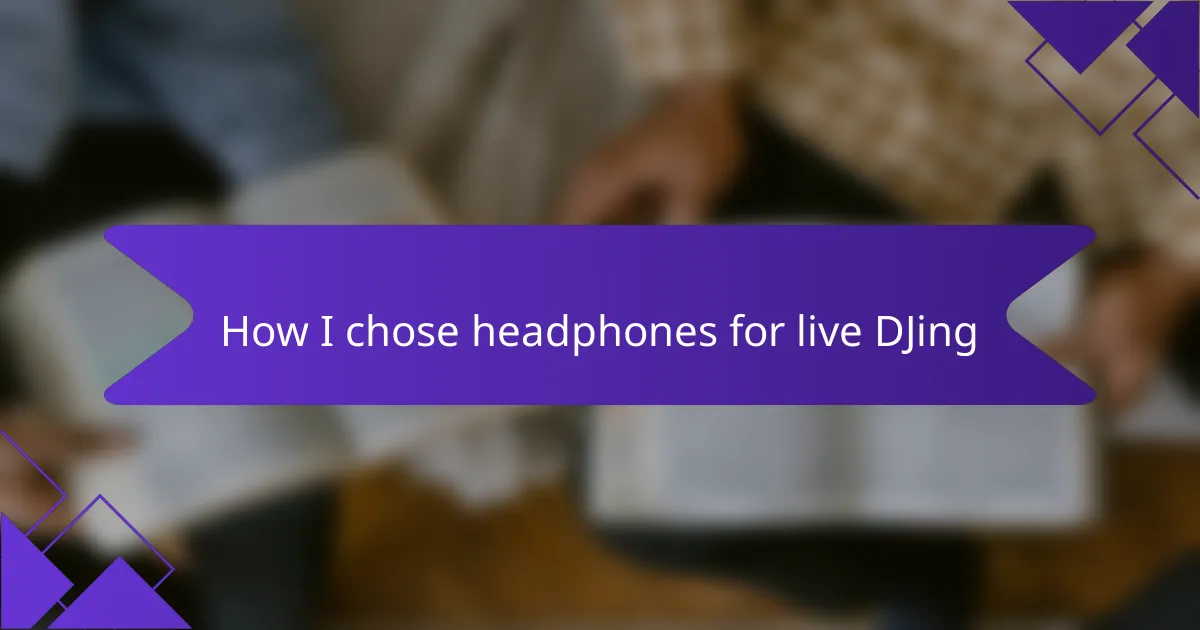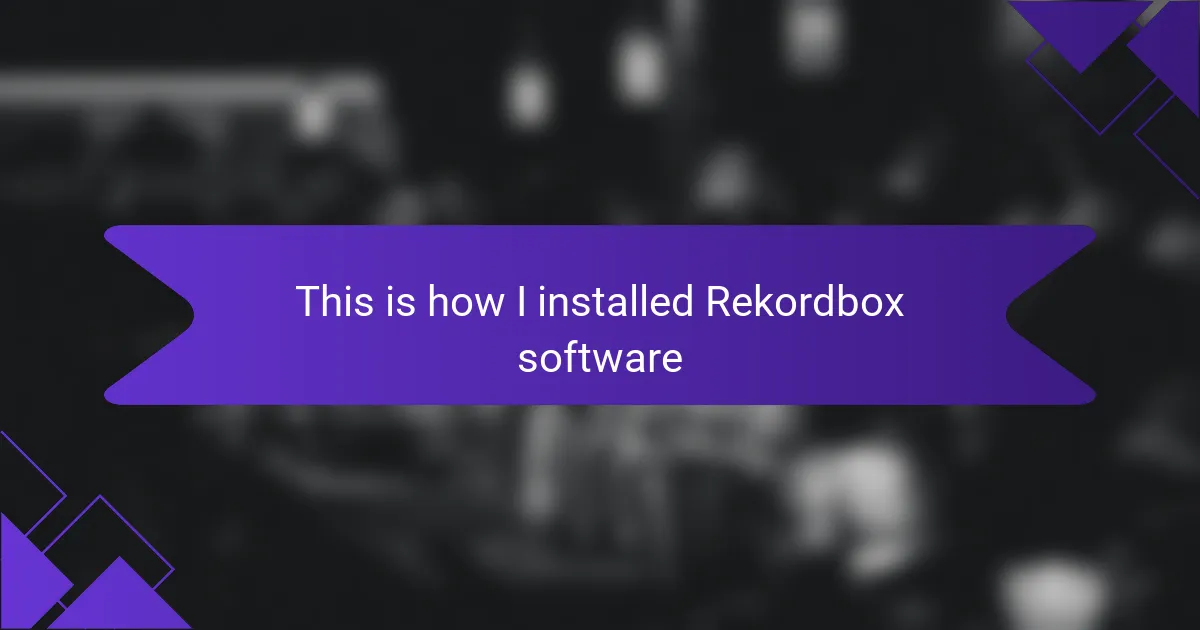Key takeaways
- DJing is about creating a vibrant atmosphere and connecting with the audience through music.
- Virtual DJ software enhances creativity with features like beatmatching, effects, and library management.
- Basic techniques like beatmatching and EQ mixing are essential for seamless transitions between tracks.
- Continuous practice and experimentation are key to developing a unique sound and improving DJ skills.
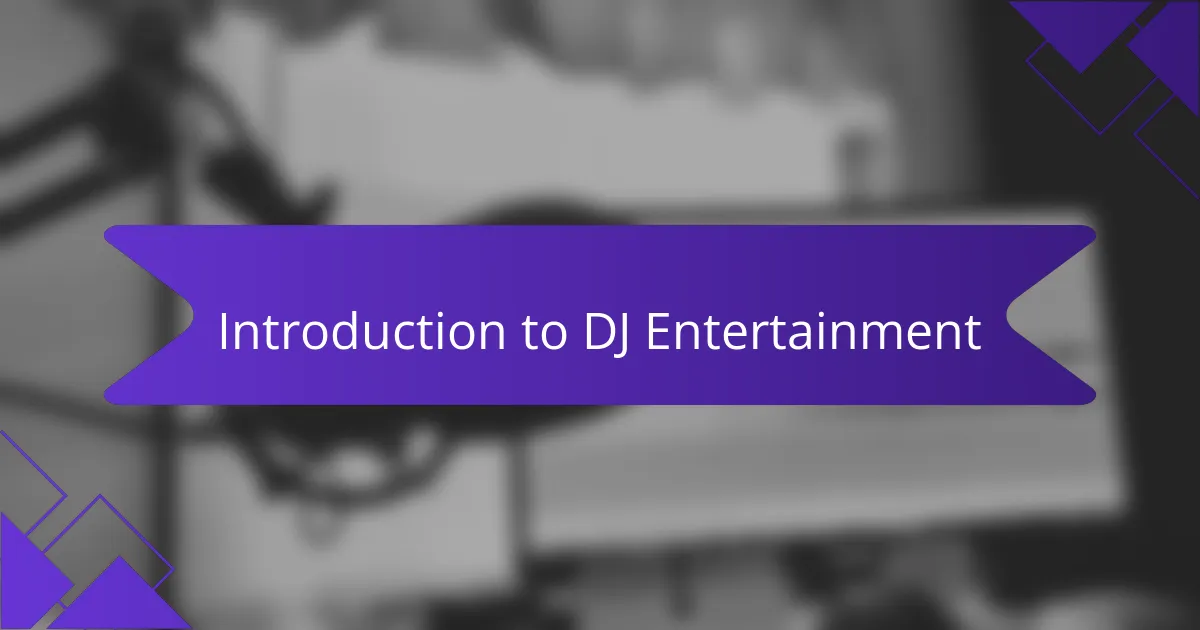
Introduction to DJ entertainment
DJ entertainment is all about creating an electrifying atmosphere that gets people moving. From weddings to nightclubs, DJs play a pivotal role in shaping the vibe of any event. My journey into DJing started out as a passion for music, and over time, it transformed into a thrilling adventure filled with creativity and connection with the audience.
When I mix tracks, it’s not just about the beats; it’s about telling a story and taking listeners on a journey. Each crowd is different, and I love reading their energy to find the perfect mix that resonates with them. That moment when the dance floor comes alive, and everyone feels the rhythm together? It’s one of the best feelings in the world.
Here’s a quick comparison table to highlight some key aspects of DJ entertainment:
| Aspect | Description |
|---|---|
| Creative Expression | DJs blend various music styles to craft a unique sound. |
| Audience Engagement | Reading the crowd to maintain the energy is a crucial skill. |
| Technological Integration | Using software like Virtual DJ enhances the mixing experience. |
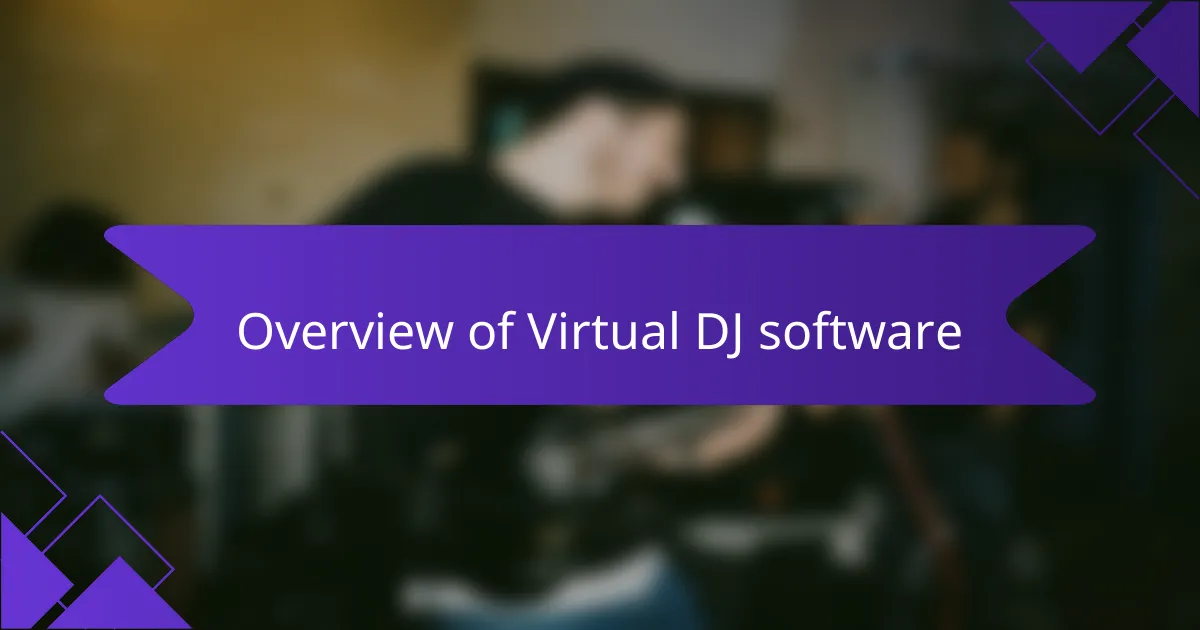
Overview of Virtual DJ software
Virtual DJ software has revolutionized the way DJs approach their craft. Having spent countless hours mixing tracks with this software, I can confidently say that it’s user-friendly and offers a plethora of features that cater to both beginners and seasoned professionals. The intuitive interface and powerful tools make it easy to beatmatch, add effects, and even synchronize tracks seamlessly, allowing creativity to flow effortlessly.
One of the standout features for me has always been the extensive library management capabilities. I appreciate how it organizes my tracks, making it simple to find exactly what I need in a pinch. Plus, the real-time waveform display helps me visualize my mixes, which is incredibly valuable when performing live.
Here’s a quick comparison of Virtual DJ against a few other popular DJ software options:
| Feature | Virtual DJ | Serato DJ | Traktor Pro |
|---|---|---|---|
| User Interface | Intuitive and customizable | Simple but less flexible | Complex but powerful |
| Effects | Extensive built-in effects | Limited to certain packages | Strong effects suite |
| Library Management | Excellent and easy to navigate | Good but less intuitive | Solid but can be cumbersome |
| Compatibility | Works with various hardware | Best with Serato hardware | Best with Native Instruments gear |
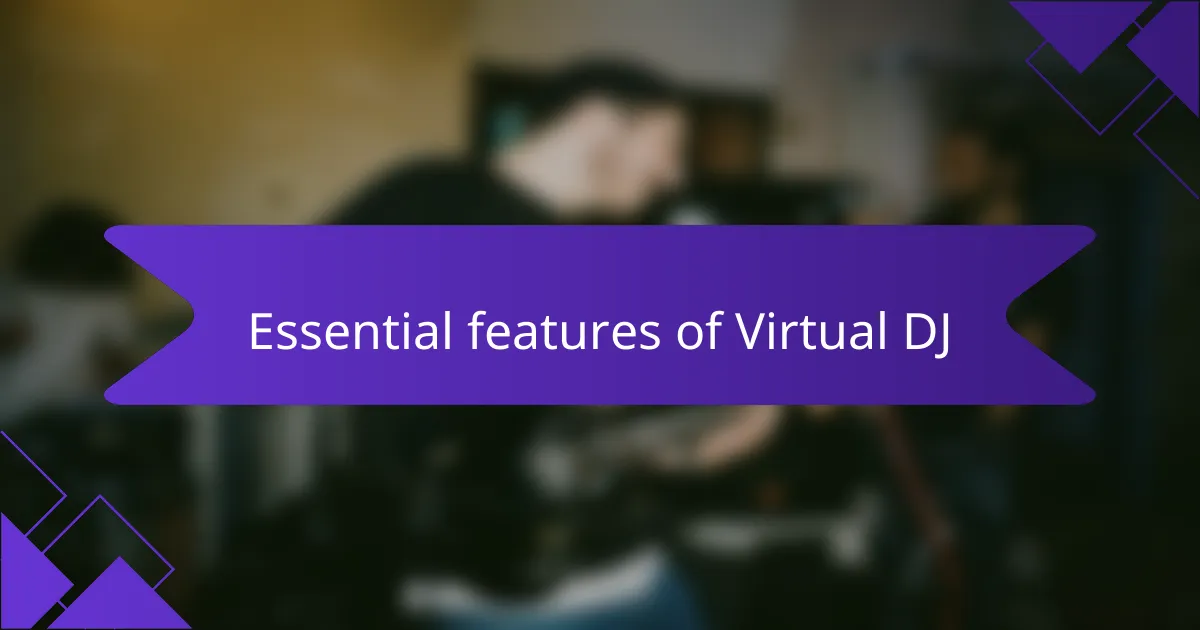
Essential features of Virtual DJ
When I dive into Virtual DJ, the first feature that grabs my attention is the beatmatching capability. It’s like having a personal assistant that helps keep the rhythm flowing smoothly, which is crucial when you’re trying to keep the crowd energized. Have you ever struggled with aligning beats? With this software, it’s almost effortless, giving me more freedom to focus on the creative aspects of my mixes.
Another significant feature is the vast array of effects available. I remember my early days of DJing, where I would play around with reverb and echo, and Virtual DJ takes it to another level. From filters to loops, the effects can transform a simple track into something truly captivating, allowing me to add my unique fingerprint on every performance.
Finally, let’s not overlook the real-time waveform displays. These provide a visual cue that aids my mixing process immensely. When I’m on stage, seeing the waveforms helps me gauge where I am in a track, making it easier to transition seamlessly between songs. This visual component is not just helpful; it allows me to make those moments even more magical for the audience. How could anyone mix without such a clear representation of the music? It’s a game changer for sure!
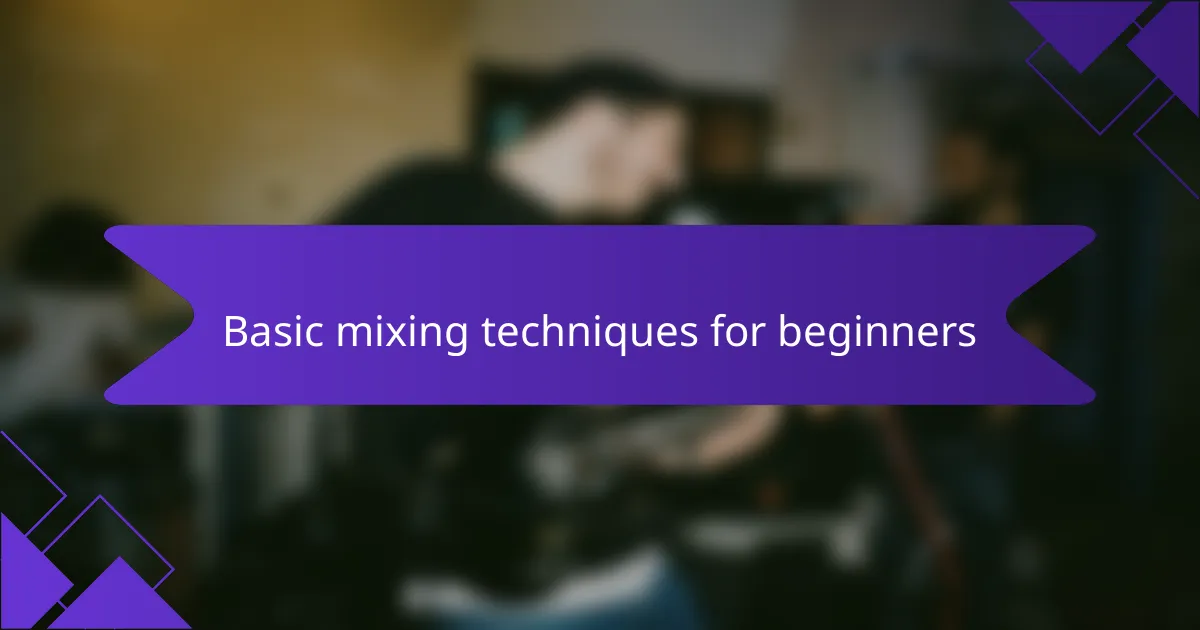
Basic mixing techniques for beginners
When I first started mixing tracks with Virtual DJ, I quickly realized a few basic techniques that significantly enhanced my DJing experience. One of my favorite techniques is beatmatching—this is the process of adjusting the tempo of two tracks so they play in sync. It can feel incredibly rewarding when you finally succeed in making those beats align perfectly, and it gives you a foundational skill that you’ll rely on throughout your DJing journey.
Another essential technique is using EQ (equalization) to blend tracks smoothly. By adjusting the bass, mid, and treble frequencies, I found that I could create seamless transitions that felt energetic and engaging. It often felt like painting with sound, and every adjustment transformed the mood on the dance floor.
Here are some key mixing techniques for beginners:
- Beatmatching: Sync the beats of two tracks for a smooth transition.
- EQ Mixing: Use EQ settings to balance frequencies and enhance your mix.
- Crossfading: Learn to use the crossfader to transition between tracks smoothly.
- Looping: Incorporate loops to extend sections of a track for creative transitions.
- Hot Cues: Set hot cues to jump to specific parts of a track instantly.
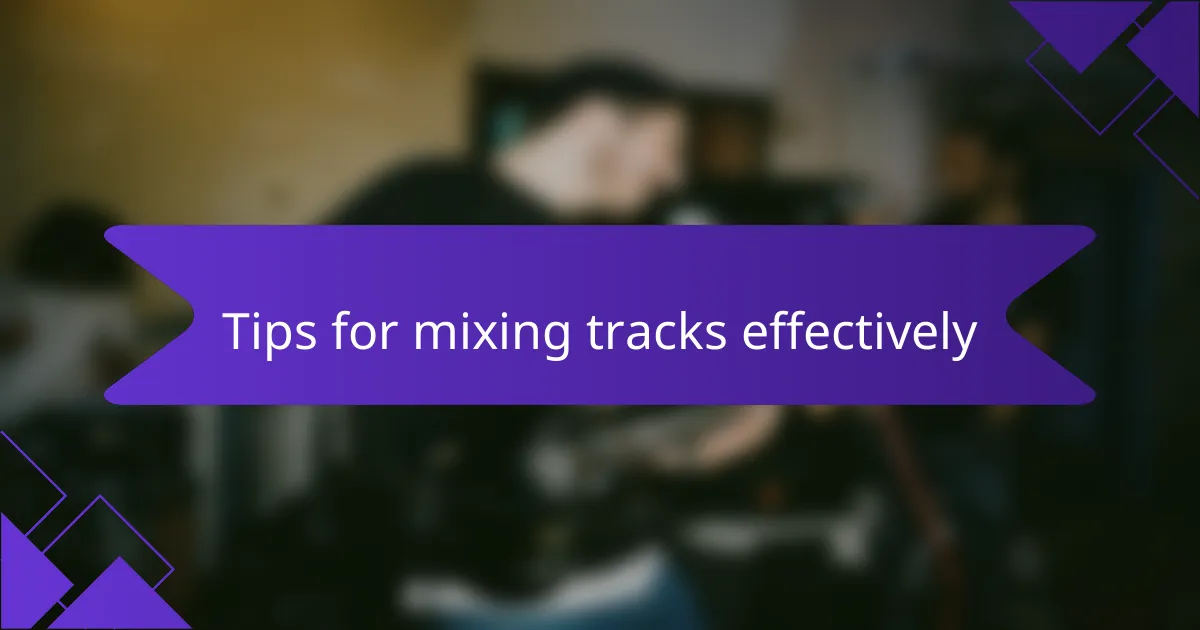
Tips for mixing tracks effectively
When mixing tracks effectively, I always remind myself of the power of tempo. Adjusting the BPM (beats per minute) of each track is crucial. Have you ever felt the energy drop when two songs clash? Finding that sweet spot where the tempos align can transform the whole vibe, keeping the dance floor alive and kicking.
Another tip I swear by is layering tracks during transitions. There’s an art to finding elements that complement each other—like a vocal sample from one song providing a backdrop for the beat of another. I often experiment with blending different genres. You’d be surprised how well a classic rock riff can elevate a dance track. It’s all about creativity and the unexpected magic that unfolds.
Last but not least, don’t underestimate the value of practice. I remember long nights spent in my room, looping sections of tracks and trying out new effects. Each session taught me something new about timing, selection, and audience engagement. So, keep experimenting! What works for me might not resonate with you, but that’s part of the fun of developing your unique sound.
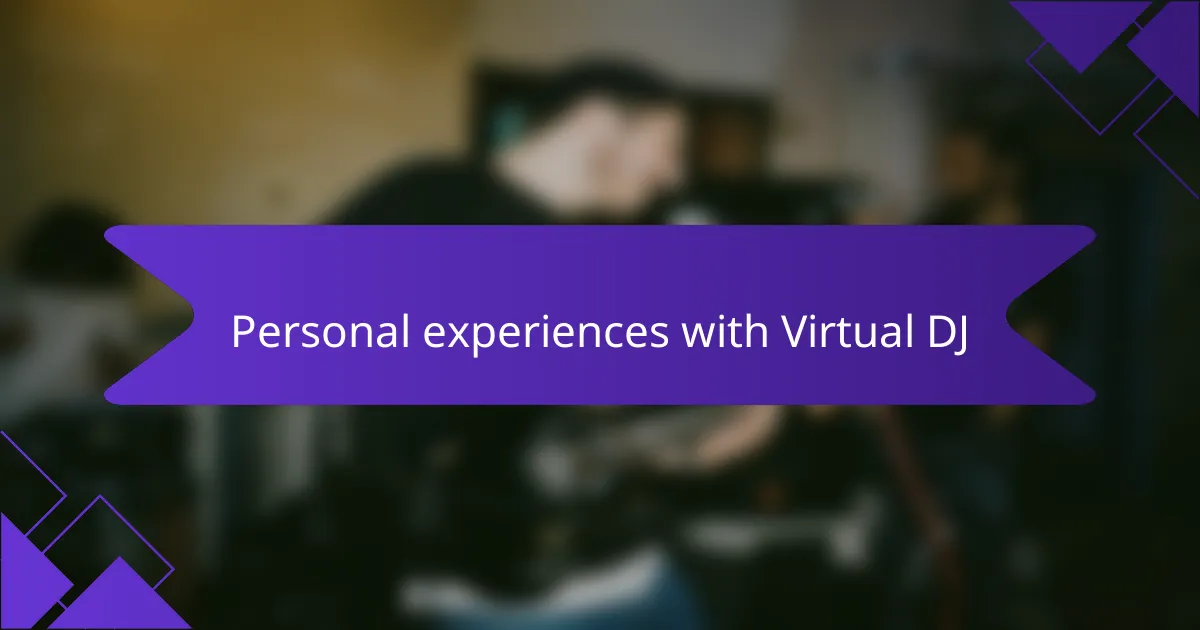
Personal experiences with Virtual DJ
When I first downloaded Virtual DJ, I had no idea how much it would transform my approach to mixing tracks. I remember spending countless hours in my room, experimenting with different beats and transitions. Each time I blended a new track, I felt a rush of excitement as the music came alive, and I gained a deeper understanding of rhythm and flow.
Over time, I appreciated the software’s intuitive interface, which made it easy to get creative, even as a beginner. I loved using the sample decks to add unique sounds and effects, which really brought my sets to life. My favorite moments were those late-night sessions, where I lost track of time just pouring my heart into the mix.
- The user-friendly interface helped me learn quickly.
- I enjoyed the variety of effects and samples available.
- There’s a real sense of community with fellow Virtual DJ users.
- Each mixing session was a chance to express my creativity.
- I often found myself experimenting with genres I never thought I’d mix.
